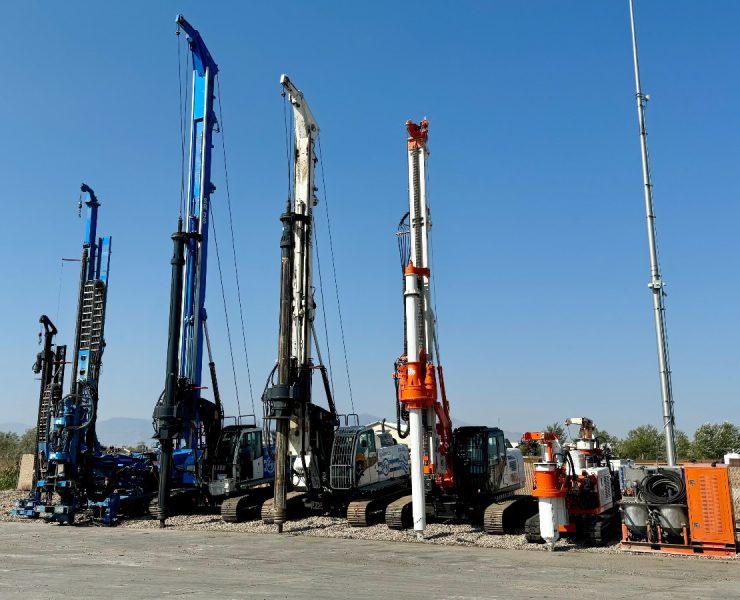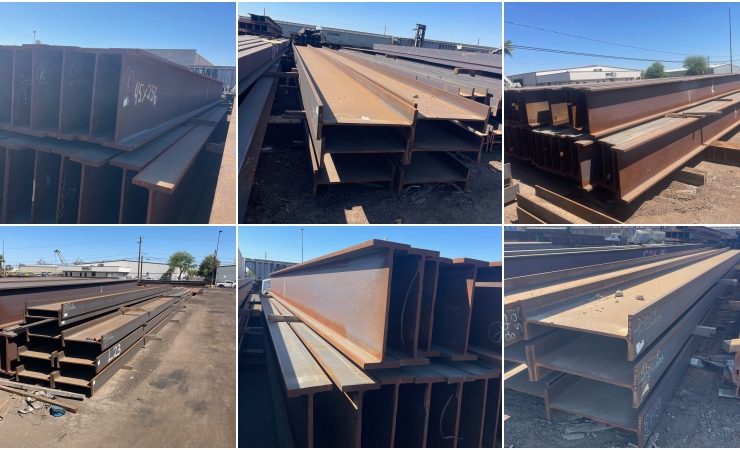Signs of Retaining Structure Drainage Problems

Even the sturdiest retaining structures can experience issues due to hydrostatic pressure, which arises when water accumulates behind the wall, exerting pressure that can compromise the structure’s integrity.

Retaining structures play a crucial role in supporting landscapes, protecting infrastructure, and preventing erosion from external forces such as rain, wind, and tidal flow. These structures, which include various types such as retaining walls, seawalls, bridge abutments, and MSE (Mechanically Stabilized Earth) walls, are designed to hold back fill soil and maintain the stability of surrounding areas. However, even the sturdiest retaining structures can experience issues due to hydrostatic pressure, which arises when water accumulates behind the wall, exerting pressure that can compromise the structure’s integrity. Regular inspections are essential to detect retaining structure drainage problems before they escalate into severe issues.
Importance of Drainage Systems
An efficient drainage system is the first line of defense against hydrostatic pressure-related problems. Properly designed and maintained drainage systems help channel excess water away from the structure, preventing the build-up of hydrostatic pressure. A thorough inspection should begin by evaluating the presence and effectiveness of the drainage system.
Signs of Hydrostatic Pressure Buildup and Loss of Backfill
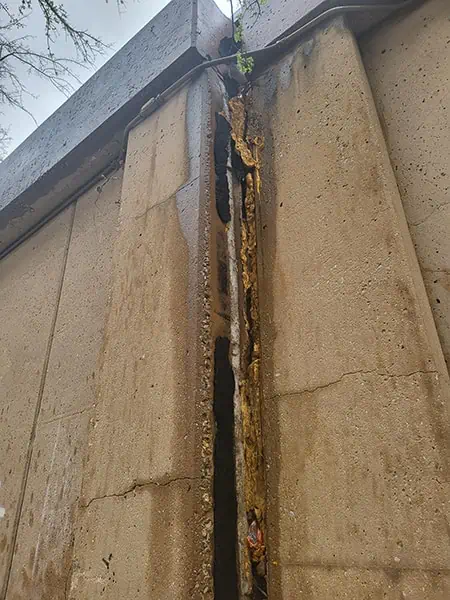 When inspecting retaining structures for retaining structure drainage problems caused by hydrostatic pressure, pay attention to the following indicators:
When inspecting retaining structures for retaining structure drainage problems caused by hydrostatic pressure, pay attention to the following indicators:
- Moisture at Drainage Outlet: If moisture is present at the drainage outlet and clean water continues to flow out after rain events, the drainage system is likely functioning well. However, if water is not being adequately drained or if soil fines flow out the drain, it suggests the onset of hydrostatic pressure problems and loss of soil fines.
- Signs on Concrete Wall Face: Failed drainage on concrete walls can sometimes be identified by looking at the wall face. Moisture on the wall, concrete efflorescence, and ASR (Alkali-Silica Reaction) all indicate water buildup and poorly functioning drainage. Wet walls can also lead to concrete spalling and failure of paint & stucco to adhere.
- Cracks, Seam Separation and Wall Movement: Built up hydrostatic pressure puts extreme lateral pressure on retaining walls. Cracks are an alarming sign of wall movement, often caused by unrelieved hydrostatic pressure. Inspect any cracks for moisture, as wet cracks indicate compromised drainage.
 Wet Cracks and Seams: Wet cracks and seams indicate water is seeping through the structure, suggesting that the drainage system may be failing.
Wet Cracks and Seams: Wet cracks and seams indicate water is seeping through the structure, suggesting that the drainage system may be failing.
- Vegetation Growth in Cracks or Seams: Vegetation, like grass and weeds, can indicate moisture ingress through cracks and seams. Such growth implies that the drainage system might not be effectively mitigating hydrostatic pressure.
- Wall Buckling or Bowing: Buckling or bowing of the wall is a direct consequence of unmanaged hydrostatic pressure. This deformity signals that the drainage system has likely ceased to function.
- Leaning Wall: A leaning wall indicates that hydrostatic pressure is pushing against the structure, demonstrating that the drainage system is not effectively releasing pressure.
 Soil Accumulation at Drainage Outlet: Visible deposits of soil near the drainage outlet suggest that soil erosion is occurring behind the wall. This could be due to the failure of the filter fabric and may lead to sinkholes forming.
Soil Accumulation at Drainage Outlet: Visible deposits of soil near the drainage outlet suggest that soil erosion is occurring behind the wall. This could be due to the failure of the filter fabric and may lead to sinkholes forming.- Backflow Material Below Cracks and Seams: Presence of soil outside the wall below cracks and seams indicates that soil is being carried away due to pressurized water pushing out. This points to a malfunctioning drainage system.
- Sinkhole Formation: Sinkholes emerge when voids develop in the backfill soil. Their appearance serves as a clear indication that the filter fabric has failed, leading to potential instability.
Addressing retaining structure drainage problems caused by Hydrostatic Pressure with the Jet Filter Drainage System
Installing a reliable and maintainable weep hole system, such as Jet Filter’s drainage solution, offers a cost-effective and efficient approach to alleviating hydrostatic pressure problems without resorting to extensive excavation. This system allows water to escape, reducing the build-up of pressure and the associated risks of erosion and structural damage.
Conclusion
Regular inspections are paramount to maintaining the integrity of retaining structures. Monitoring drainage systems and being vigilant for signs of hydrostatic pressure problems can prevent minor issues from escalating into major concerns. By addressing these issues promptly and effectively, we can ensure the longevity and stability of these essential retaining structures, safeguarding landscapes, infrastructure, and communities against the forces of nature. However, with modern drainage design comes more efficient drainage. The maintenance and inspection intervals become single points, opposed to entire structures.














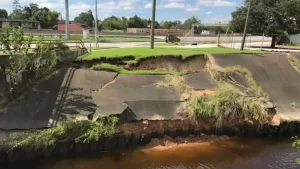 Wet Cracks and Seams: Wet cracks and seams indicate water is seeping through the structure, suggesting that the drainage system may be failing.
Wet Cracks and Seams: Wet cracks and seams indicate water is seeping through the structure, suggesting that the drainage system may be failing.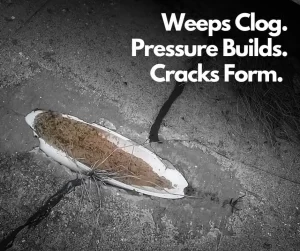 Soil Accumulation at Drainage Outlet: Visible deposits of soil near the drainage outlet suggest that soil erosion is occurring behind the wall. This could be due to the failure of the filter fabric and may lead to sinkholes forming.
Soil Accumulation at Drainage Outlet: Visible deposits of soil near the drainage outlet suggest that soil erosion is occurring behind the wall. This could be due to the failure of the filter fabric and may lead to sinkholes forming.